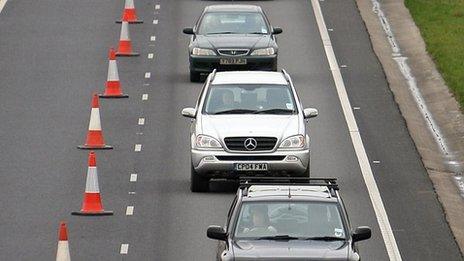Switching spending to capital projects
- Published
- comments
The chancellor looks set to use next week's Autumn Statement to switch some day-to-day spending to spending more on Britain's infrastructure - in the jargon moving some spending from current to capital projects.
His deputy, the Chief secretary to the Treasury, Danny Alexander, said today in a speech that "next week's announcement will switch funds to capital spending plans".
Ministers have already suggested that they want to find ways to use Britain's low long-term interest rates to underwrite private sector investment in roads, broadband and other infrastructure, which will increase Britain's long term growth rate.
At the Liberal Democrat conference, Danny Alexander announced the creation of a new half a billion pound infrastructure fund paid for from under-spending of departmental budgets.
One source close to the decision said of the funding switch: "It is undoubtedly significant. It will mean essentially extra spending on infrastructure. It does not mean more borrowing. But we are switching some money from one side to the other."
In September, I revealed that some Liberal Democrats believed up to £5 billion more could be spent on infrastructure. The key to their argument was that the government's deficit rules allow capital spending to be increased without abandoning Plan A as the Treasury's so-called "fiscal mandate" targets current not capital spending.
Their other target - a fall in the debt-to-GDP ratio - limits their ability to spend more on capital projects unless the Treasury is prepared to argue that it can stimulate growth in the future by spending more now.
- Published24 November 2011
